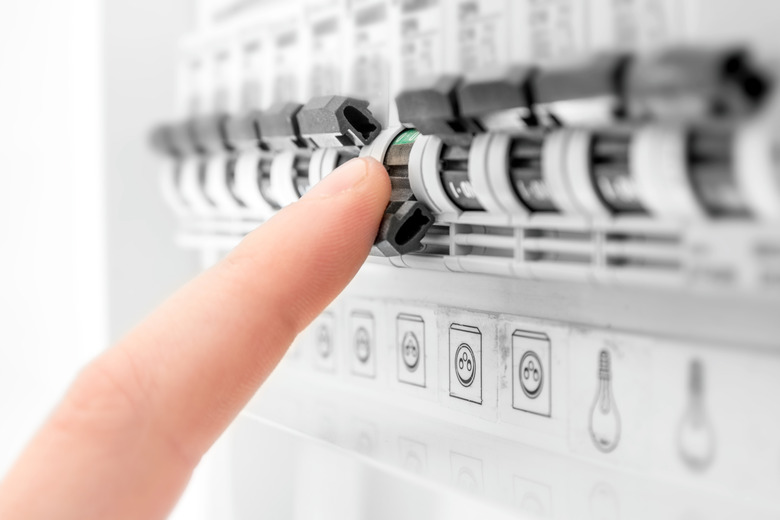How To Calculate 3 Phase Power
Three-phase power is a widely used method for generating and transmitting electricity, but the calculations you'll need to perform are a little more complicated than for single-phase systems. That said, there isn't much extra you have to do when working with three-phase power equations, so you'll be able to solve whatever three-phase power problem you've been assigned easily. The main things you'll need to do are find the current given the power in a circuit or vice-versa.
TL;DR (Too Long; Didn't Read)
Perform a three-phase power calculation using the formula:
**P = √3 × pf × I × V**
Where **pf** is the power factor, **I** is the current, **V** is the voltage and **P** is the power.
Single-Phase vs. Three-Phase Power
Single-Phase vs. Three-Phase Power
Single- and three-phase power are both terms describing alternating current (AC) electricity. The current in AC systems continually varies in amplitude (i.e., size) and direction, and this variation generally takes the shape of a sine wave. This means it smoothly varies with a series of peaks and valleys, described by the sine function. In single-phase systems, there is only one such wave.
Two-phase systems split this into two. Each section of current is out of phase with the other by half a cycle. So when one of the waves describing the first part of the alternating current is at its peak, the other is at its minimum value.
Two-phase power isn't common, though. Three-phase systems use the same principle of splitting the current into out-of-phase components, but with three instead of two. The three parts of the current are out of phase by a third of a cycle each. This creates a more complicated pattern than two-phase power, but they cancel each other out in the same way. Each part of the current is equal in size but opposite in direction to the other two parts combined.
Three-Phase Power Formula
Three-Phase Power Formula
The most important three-phase power equations relate power (P, in watts) to current (I, in amps), and depend on the voltage (V). There is also a "power factor" (pf) in the equation that takes account for the difference between the real power (which performs useful work) and the apparent power (which is supplied to the circuit). Most types of three-phase power calculations are performed using this equation:
P = √3 × pf × I × V
This simply states that the power is the square root of three (around 1.732) multiplied by the power factor (generally between 0.85 and 1, see Resources), the current and the voltage. Don't let all the symbols scare you off using this equation; once you put all the relevant pieces into the equation, it's easy to use.
Converting kW to Amps
Converting kW to Amps
Let's say you have a voltage, a total power in kilowatts (kW) and a power factor, and you want to know the current (in amps, A) in the circuit. Re-arranging the power calculation formula above gives:
**I = P / (√3 × pf × V)**
If your power is in kilowatts (i.e., thousands of watts) it's best to either convert it to watts (by multiplying by 1,000) or keep it in kilowatts make sure your voltage is in kilovolts (kV = volts ÷ 1,000). For example, if you have a 0.85 power factor, 1.5 kW of power and a voltage of 230 V, simply quote your power as 1,500 W and calculate:
**I = P / (√3 × pf × V)**
= 1,500 W / √3 × 0.85 × 230 V
= 4.43 A
Equivalently, we could have worked with kV (noting that 230 V = 0.23 kV), and found the same:
**I = P / (√3 × pf × V)**
= 1.5 kW / √3 × 0.85 × 0.23 kV
= 4.43 A
Converting Amps to kW
Converting Amps to kW
For the reverse process, use the form of the equation given above:
P = √3 × pf × I × V
Simply multiply your known values together to find the answer. For example, with I = 50 A, V = 250 V and pf = 0.9, this gives:
P = √3 × pf × I × V
= √3 × 0.9 × 50 A × 250 V
= 19,486 W
Since this is a big number, convert to kW using (value in watts) / 1000 = (value in kilowatts).
19,486 W / 1000 = 19.486 kW
Cite This Article
MLA
Johnson, Lee. "How To Calculate 3 Phase Power" sciencing.com, https://www.sciencing.com/how-6521700-calculate-3-phase-power/. 12 November 2018.
APA
Johnson, Lee. (2018, November 12). How To Calculate 3 Phase Power. sciencing.com. Retrieved from https://www.sciencing.com/how-6521700-calculate-3-phase-power/
Chicago
Johnson, Lee. How To Calculate 3 Phase Power last modified March 24, 2022. https://www.sciencing.com/how-6521700-calculate-3-phase-power/
